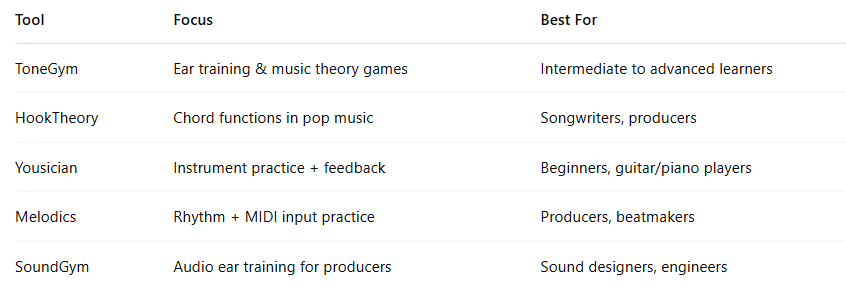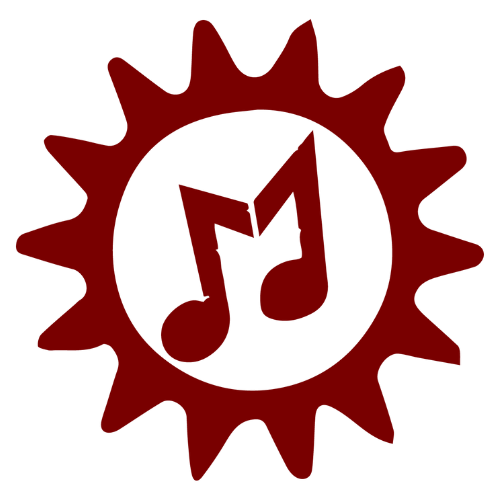Music theory has long been the bedrock of musical understanding, providing the language that helps musicians make sense of melody, harmony, rhythm, and form. Yet, for many students, the subject can feel abstract, slow-moving, or even intimidating. Enter AI tools—apps and platforms powered by artificial intelligence, promising to make learning theory faster, more intuitive, and even enjoyable.
From real-time feedback on chord progressions to gamified ear training and personalized learning plans, AI is reshaping how we interact with music education. But should you rely on it? Can AI teach something as creative and nuanced as music theory? Or does it risk oversimplifying what should be a deeply human experience?
In this in-depth post, we’ll break down how AI is changing the music theory landscape, weigh the pros and cons, and help you decide if tech-assisted learning is the right choice for your musical journey.
1. What Is Music Theory, and Why Does It Matter?
Music theory is essentially the grammar of music. It helps you:
- Understand how music works
- Communicate with other musicians
- Improve composition, improvisation, and interpretation
- Analyze music across styles and genres
Knowing theory doesn’t mean you’ll be less creative. In fact, the opposite is often true—understanding theory gives you the tools to break the rules on purpose, not by accident1.
But despite its importance, traditional music theory education often struggles to engage students. It’s typically:
- Paper-based and not interactive
- Focused on classical conventions
- Removed from the kind of music most students listen to
This is where AI can step in—with the promise of personalized, dynamic, and musically relevant instruction.
2. What Are AI Music Theory Tools?
AI music theory tools use machine learning algorithms, data analytics, and real-time audio processing to create an interactive learning experience. Popular examples include:
- ToneGym: A gamified platform that builds ear training and theory skills using adaptive algorithms2.
- HookTheory: Offers interactive music analysis of pop songs, helping users understand chord functions and progressions.
- Yousician: Uses audio recognition to provide instant feedback as you play; includes embedded theory lessons tailored to your instrument.
- Melodics and TonedEar: Use AI to adapt lessons based on your strengths and weaknesses.
These tools track your learning curve, suggest next steps, and even auto-generate quizzes or exercises designed to fill knowledge gaps.
3. The Advantages of Learning Theory with AI
a) Personalized Learning
Unlike a traditional classroom, AI tools analyze your progress in real-time, adjusting difficulty and content based on how you’re doing. This creates a highly individualized experience that keeps learners in the “zone of proximal development” — not too easy, not too hard3.
b) Gamification and Engagement
AI-driven theory platforms often feel more like games than study sessions. You earn points, unlock levels, and get immediate feedback. This keeps motivation high, particularly for younger learners or those without access to formal instruction4.
c) Visual and Aural Learning Combined
Many AI apps blend visual theory explanations with live sound or MIDI playback, helping students hear the concepts they’re learning about. This bridges the gap between abstract notation and real musical experiences.
d) Real-World Context
Some AI tools (like HookTheory) pull from popular music, showing you how theory applies to songs you already love. This is a huge motivator—suddenly, secondary dominants and modal mixture don’t just exist in dusty textbooks.
4. Potential Drawbacks of AI-Driven Music Theory
While the benefits are exciting, it’s not all perfect. Here are a few downsides to consider:
a) Lack of Human Nuance
AI is great at recognizing patterns—but music isn’t just about patterns. It’s about expression, context, cultural history, and aesthetics. Human teachers offer personal insight, emotional guidance, and interpretive feedback that AI simply can’t replicate (yet)5.
b) Risk of Oversimplification
Some AI tools reduce complex topics to binary right/wrong answers, which can encourage shallow learning. For example, understanding voice leading or modal interchange isn’t always a matter of multiple choice.
c) Limited Scope and Curriculum Gaps
Many AI platforms focus heavily on Western tonality and popular music conventions, neglecting non-Western, jazz, or avant-garde theory. This can lead to a skewed understanding of music’s diversity6.
d) Screen Fatigue and Disconnection
Relying too much on devices can take you away from actual music-making. There’s a risk that users might spend more time studying music than actually playing it.
5. Can AI Replace Human Music Teachers?
The short answer: No.
The better question: Can AI augment what teachers do best? Absolutely.
Here’s how the best AI tools work alongside traditional instruction:
- They handle drills and repetitive tasks, freeing up teachers to focus on musicality and expression.
- They allow for data-informed instruction, helping teachers pinpoint where students are struggling.
- They empower students to practice theory independently, between lessons or outside school hours.
In fact, many music educators are embracing these tools to flip the classroom—letting students explore theory online, then unpacking it in lessons through improvisation, discussion, or performance7.
6. How AI is Shaping the Future of Music Education
AI is part of a larger trend toward adaptive learning—using data to tailor education to individual needs. In music, this means:
- Smarter ear training with pitch-detection and real-time scoring
- Instant feedback on notation and harmony exercises
- Interactive music scores that react to user input
- AI-powered composition assistants that explain theory as you write
As tools get more sophisticated, we’ll see new hybrids emerge:
- Theory + production apps that teach harmony through beat-making
- Virtual coaches that help improvise with theory-based suggestions
- AI bandmates that simulate harmonic and rhythmic interaction
It’s not about replacing traditional methods. It’s about expanding them—making theory more accessible, engaging, and connected to the way people actually learn and make music today8.
7. Case Studies: Students and Teachers Using AI Tools
Case 1: The High Schooler
Elena, 15, is a self-taught guitarist who found classical theory boring—until she started using ToneGym. The gamified approach got her hooked, and now she can identify cadences by ear and write chord progressions for her original songs.
Case 2: The College Student
Daniel is a music major who supplements his jazz theory coursework with HookTheory and BandLab’s AI-driven chord suggestions. This helps him test voicings and analyze real-world harmony without having to wait for class.
Case 3: The Private Teacher
Maria, a piano instructor, uses Yousician with her younger students to reinforce interval recognition and rhythm drills. She assigns online modules between lessons, allowing more time for expression and interpretation during class.
These stories illustrate a key point: AI tools aren’t a replacement—they’re an enhancer.
8. Getting Started: Best AI Tools to Try
Here are some of the most recommended AI-powered tools for music theory learners:

9. A Word of Caution: Don’t Let AI Be Your Only Teacher
While AI is powerful, it can’t:
- Interpret emotion
- Read the room in an ensemble
- Offer mentorship or artistic critique
So don’t ditch your lessons, workshops, or jam sessions. Combine AI learning with community-based music-making—a balance that develops both brain and soul.
The best musicians know: theory is not just about getting answers right. It’s about deepening your relationship with sound.
10. Final Thoughts: Should You Learn Theory with AI?
If you're someone who learns best visually, aurally, or kinesthetically—or if you find traditional theory overwhelming—AI tools can be a game-changer.
Use them to:
- Reinforce concepts between lessons
- Make practice more interactive
- Discover patterns in your favorite songs
- Track progress over time
But keep in mind: music is a conversation, not a quiz. AI can help you speak the language of music, but the poetry, expression, and humanity behind that language still need a human touch.
So yes—learn music theory with AI. Just don’t forget to make music with people, too.
Footnotes
- Laitz, S. G. (2012). The Complete Musician: An Integrated Approach to Tonal Theory, Analysis, and Listening. Oxford University Press. ↩
- ToneGym. (n.d.). Retrieved from https://www.tonegym.co ↩
- Vygotsky, L. S. (1978). Mind in Society: The Development of Higher Psychological Processes. Harvard University Press. ↩
- Hamari, J., Shernoff, D. J., Rowe, E., Coller, B., Asbell-Clarke, J., & Edwards, T. (2016). Challenging games help students learn: An empirical study on engagement, flow and immersion in game-based learning. Computers in Human Behavior, 54, 170–179. ↩
- Westerlund, H. (2006). Garage Rock Band—A Future Model for Music Education? British Journal of Music Education, 23(3), 257–273. ↩
- Campbell, P. S. (2004). Teaching Music Globally: Experiencing Music, Expressing Culture. Oxford University Press. ↩
- Burnard, P., & Younker, B. A. (2008). Investigating children's creative musical thinking using metaphors. Thinking Skills and Creativity, 3(2), 120–134. ↩
- Tripp, S. D., & Bichelmeyer, B. A. (1990). Rapid prototyping: An alternative instructional design strategy. Educational Technology Research and Development, 38(1), 31–44. ↩
Download our FREE Resources!
Unlock a world of free resources and downloadable song charts! We offer downloadable sheet music, chord charts, and more to support your journey. Visit our site today to get started and enjoy these valuable tools!


